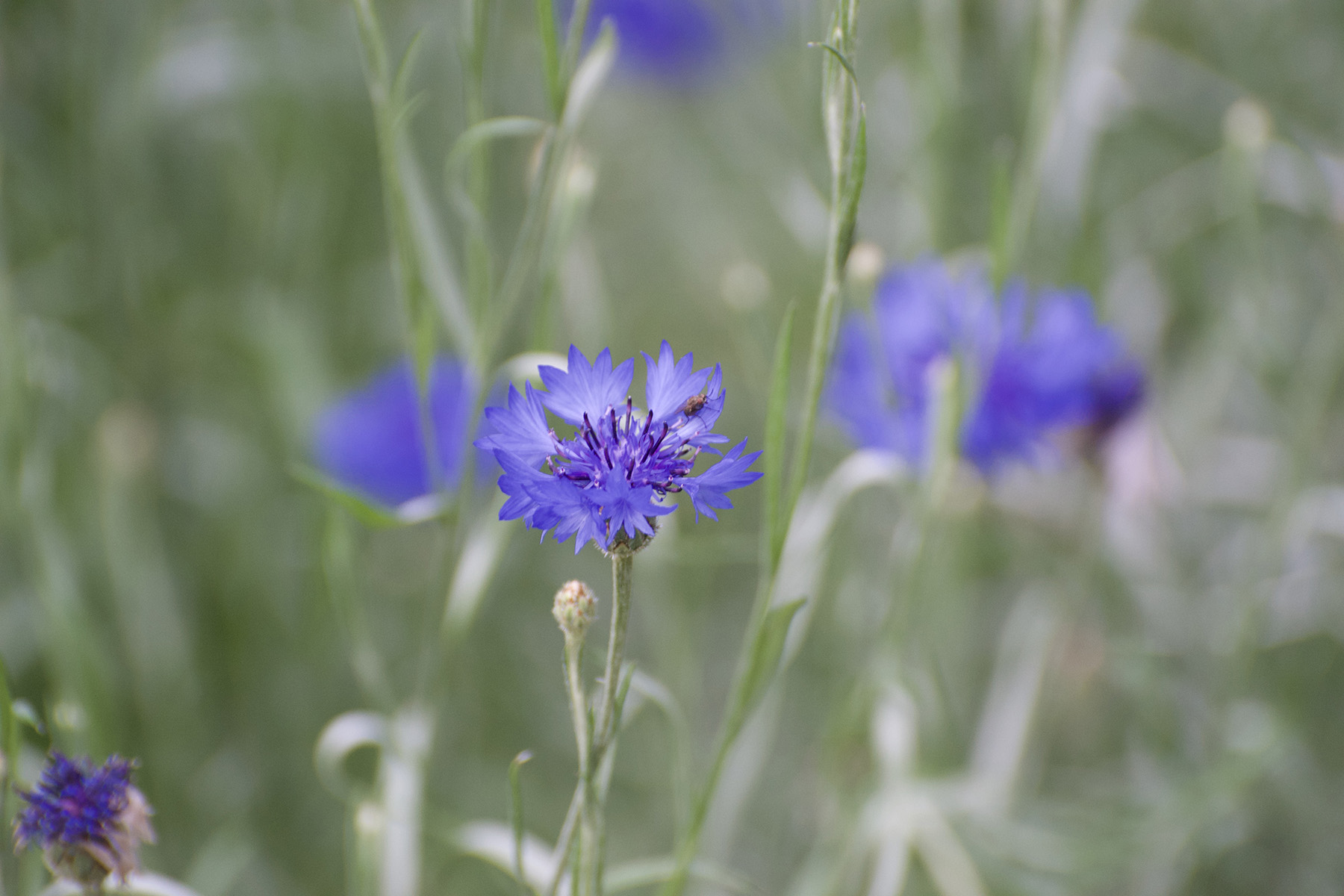I rarely regret my habit of discarding mementos. No kids’ kindergarten drawings clog my drawers, no receipts for memorable journeys, few letters. Except on days like these, when I have to reconstruct what I was told, in a poem no less, by a lover half an eternity ago.
It had to do with cornflowers. My blue eyes? My toughness? (Not only did the plant invade the farmers’ fields taking up valuable nutrients, but it blunted the hand sickles with its tough stems – Thou blunt’st the very reaper’s sickle and so in life and death becom’st the farmer’s foe….) The intensity of blues, found in flower and my moods alike? Honestly, I forget. I do remember, however, that he left me for a violinist, and ended up, despite a brilliant dissertation on Trotsky in exile, teaching Spanish to 6th graders. She switched from concert hall to babies. I wonder what became of them.

Cornflowers are on my mind because of seeing too many images of people’s burnt and swollen eyes from tear gas or other noxious substances. Distilled in the right way, like the famous French concoction of the title, they can calm inflamed ophthalmic surfaces, work as anti-inflammatories and anti-irritant on lids, and as a decongestant for swollen mucous membranes. No use to put it on the officially permitted medic stations helping protesters with water and first aid, though, when even those get destroyed by police in sheer spite like yesterday in Ashville, NC.

I have always been partial to cornflowers (Centauria Cyanus). They grew wild, together with poppies and chamomile, in the fields around our village. We picked them, and they actually lasted in the vase for quite some time. I was fascinated by the story in my book of Greek Mythology in which Cyanos, the child poet, sang the praises of nature so well that the goddess Flora transformed him into cornflower so that we remember him every year anew. Well, these years we lack reminders: the industrial agricultural use of land with its systemic herbicide and pesticide application, has driven the plant pretty much out of our view, other than in ornamental gardens. No swaths of blue alongside and within fields of oats, wheat, barley and rye for us.

*
In ways, however, that remind me of the dilemma of how to approach art you love when you despise the artist who creates it, I have had mixed feelings when I look at cornflowers ever since I learned that is was a secret symbol for the Austrian Nazi part in the 1930s. Wouldn’t you know it that some of the contemporary German neo-Fascists took up the symbol used by the then-banned National Socialists in 1930s Austria before the Anschluss of 1938 brought the Nazis to power in the country?

By obvious chain of association, I have been unable to stop thinking about how political change can creep up on you when disbelief has kept you for the longest time in a state of denial. One of the things that matter and that I have certainly underestimated, is the degree of contemporary conformity – or complicity – despite all historical warnings, that allows the poisonous elements to gain power and solidify it. I hope you have the time to read a rather long, but perceptive case description of personalities who shared beginnings, but ended up in very different positions when it came to stand up against evil. Anne Applebaum’s essay on complicity and its consequences is informative in its detailed description of the process; I am not sure I learned enough to understand the causes that differentiate the psychological profiles of those who resist complicity and those who embrace it. But much food for thought in a week where I think we are so overloaded on emotional facts that counterbalancing it with thinking about underlying patterns is perhaps helpful. If only to distract us.

And if your eyes are strained from all that reading – there’s always Eau de Casselunettes! Or a bit of art to restore you.



Music today is Mahler’s first song cycle of the wayfarer – Lieder eines fahrenden Gesellen. The wayfarer would have seen cornflowers along the fields while traveling, thinking of the blue eyes of his beloved. She dumped him, too, provoking much baritonal despondency…







Carl Wolfsohn
Thanks for linking the Anne Applebaum piece. And the gorgeous cornflowers!
Louise A Palermo
I’m so sick to my stomach now and it needs to remain that way. The demise of this world inside our borders is imminent as we unfray and corruption tears us apart. If pesticides were set aside, cornflowers would bloom again as nature intended, in the natural sense, not the Nazi sense. This was a profound essay. I have printed it so I can re-read it, and the essay in Atlantic you cited.
joseph mclelland
It just so happens that I have noticed cornflowers lately. They remind me of my first walks around the Columbia Basin countryside as a newcomer. Just yesterday, at daybreak on the Maple Trail, off Saltzman Rd., I saw quite a few. This report and the one from June 1st have hit particularly stretchy touchstones among the other, more urgent subjects. “The Poison Within” took me back to Lugano, where a marble sculpture of Socrates, seemingly asleep amid the neatest, “very Swiss” borders and lawns suggests he died of thinking. No clue to the effects of the plant. The statue is quite large and the pose so restful. This is just to say how welcome are your introductory choices and the serenity in how you finish stating the matter at hand. “All natural”, as in the label to a good sauce . . .